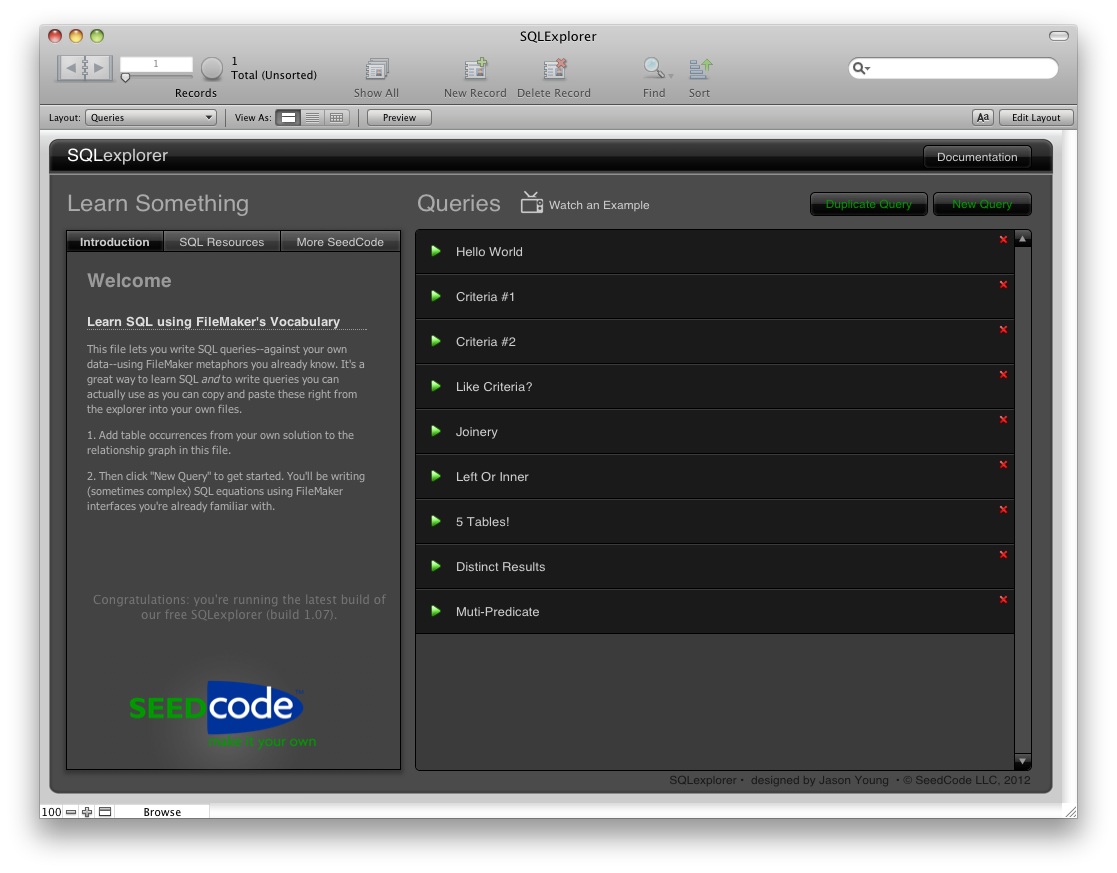

Although the data is actually stored in the SQL database, you can interact with it in your FileMaker database-seeing live data that updates automatically, editing that data, and writing it back to the SQL database so that other users accessing the same data will see the changes you’ve made. If FileMaker Pro can see the SQL data source in the simple Find Data Source dialog, all you have to do is select it, authenticate, and you’re in. Well, with FileMaker 9, you can now reference and use an SQL data source in exactly the same way that you can reference and use another FileMaker file. So for example, by adding a simple file reference to my billing database, I was able to post payments in my checking database at the same time, without actually having to open and edit the checking database. It was finally possible in FileMaker Pro to create applications in which all the data was in one file and all the elements of the application (such as layouts and scripts) were in another. File references opened up a number of opportunities for FileMaker developers. One of the revolutionary features that appeared in FileMaker 7 was the ability to create in one FileMaker database file a reference to another file, and then to use that referenced data as if it were actually stored in the current file. The key to this miracle is the data source reference. In short, FileMaker Pro 9 offers SQL without tears.

#Filemaker pro 16 sql query full#
I know only a handful of advanced FileMaker developers that actually made use of it.īut that’s about to change: with FileMaker Pro 9, if you’ve got a SQL data source handy that was set up by somebody else, you can now connect to that data source and make full use of it without knowing a thing about SQL. But this feature was hard to use, didn’t work very well, and in any case was more like data exchange than data access. Technically, it has long been possible for a FileMaker database to query a SQL data source, then import a copy of the resulting data set to play with. In the past, FileMaker users were by and large shut out of these important data collections, because FileMaker uses its own proprietary (that is, non-standard) database engine. What You'll learn Create SQL queries to build fast and efficient formulas Discover new features of version 16 such as JSON functions, Cards, Layout Object window, SortValues, UniqueValues, using variables in Data Sources Write calculations using built-in and creating your own custom functions Discover the importance of a good approach to interface and technical design Apply best practices for naming conventions and usage standards Explore advanced topics about designing professional, open-ended solutions and using advanced techniques Who This Book Is For Casual programmers, full time consultants and IT professionals.SQL is the standard used to communicate with the big databases found everywhere: in businesses, hospitals, universities, government, on the Web-almost anywhere that a lot of data must be accessed by a lot of people. A custom solution built with FileMaker can quickly tap into a powerful set of capabilities and technologies to offer users an intuitive and pleasing environment in which to achieve new levels of efficiency and professionalism. FileMaker Pro 16 is a powerful database development application used by millions of people in diverse industries to simplify data management tasks, leverage their business information in new ways and automate many mundane tasks.

Written by a long time FileMaker developer, this book contains material for developers of every skill level. This book includes everything a beginner needs to get started building databases with FileMaker and contains advanced tips and techniques that the most seasoned professionals will appreciate. Extend FileMaker's built-in functionality and totally customize your data management environment with specialized functions and menus to super-charge the results and create a truly unique and focused experience.


 0 kommentar(er)
0 kommentar(er)
